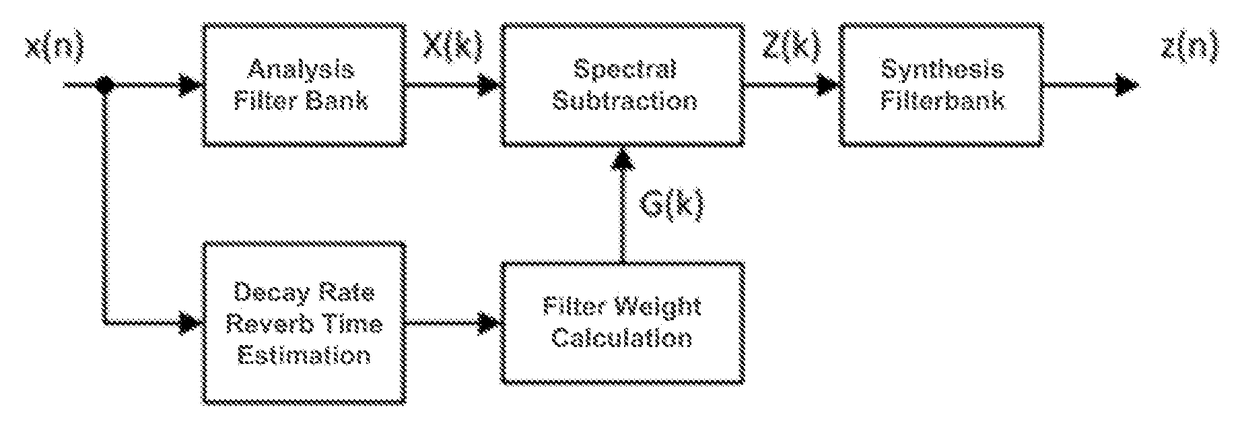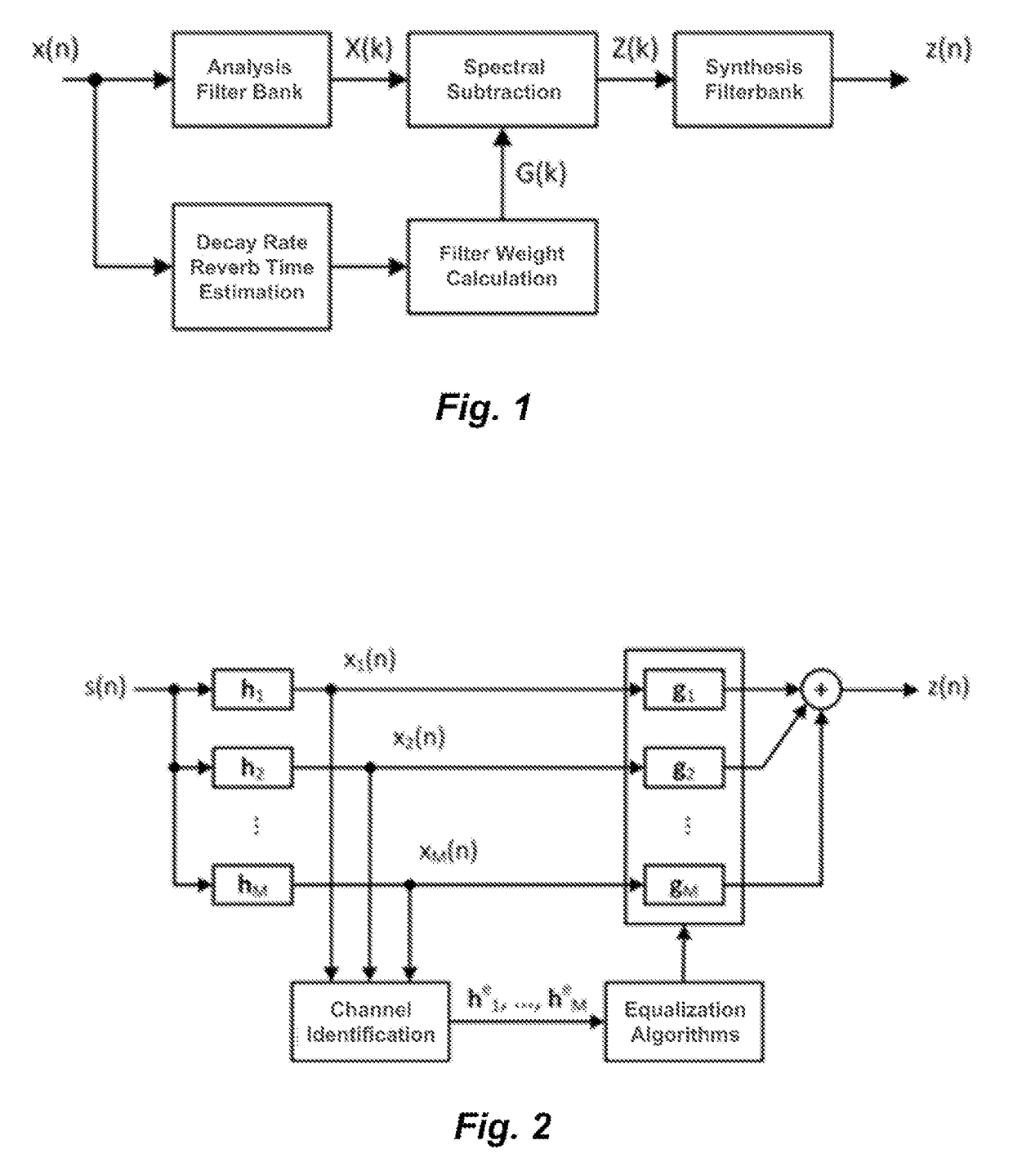Determination of Room Reverberation for Signal Enhancement
a technology of room reverberation and signal enhancement, applied in electrotherapy, instruments, therapy, etc., can solve the problems of reducing the quality of audio signals perceived by human listeners, reducing speech understanding, and hearing problems, and achieve the effect of reducing reverberation effects
- Summary
- Abstract
- Description
- Claims
- Application Information
AI Technical Summary
Benefits of technology
Problems solved by technology
Method used
Image
Examples
Embodiment Construction
[0022]Various embodiments of the present invention are directed to hearing prosthesis arrangements for a hearing assisted patient that circumvent the problem of estimation errors in blind dereverberation algorithms by direct measurement of a reference reverberation signal produced in the acoustic environment. In the specific context of a hearing prosthesis system, the reference reverberation signal can be produced by a user remote control and then the reflected reference reverberation signal is measured by the sensing microphone in the system audio processor device.
[0023]FIG. 3 shows a system for reduced reverberation using a reference reverberation signal, and FIG. 4 shows various functional steps in such a method of signal processing. A behind the ear (BTE) device 304 of a hearing prosthesis system (e.g., a cochlear implant system) includes a sensing microphone that senses the acoustic environment 300 around a hearing impaired patient (i.e., the room where the patient is located)....
PUM
 Login to View More
Login to View More Abstract
Description
Claims
Application Information
 Login to View More
Login to View More - R&D
- Intellectual Property
- Life Sciences
- Materials
- Tech Scout
- Unparalleled Data Quality
- Higher Quality Content
- 60% Fewer Hallucinations
Browse by: Latest US Patents, China's latest patents, Technical Efficacy Thesaurus, Application Domain, Technology Topic, Popular Technical Reports.
© 2025 PatSnap. All rights reserved.Legal|Privacy policy|Modern Slavery Act Transparency Statement|Sitemap|About US| Contact US: help@patsnap.com



